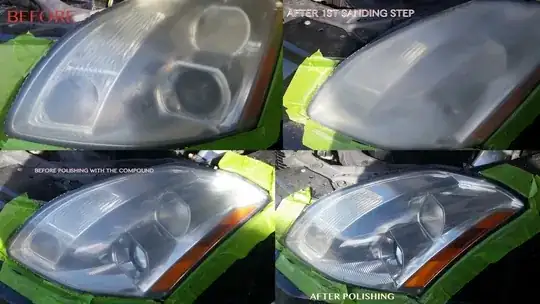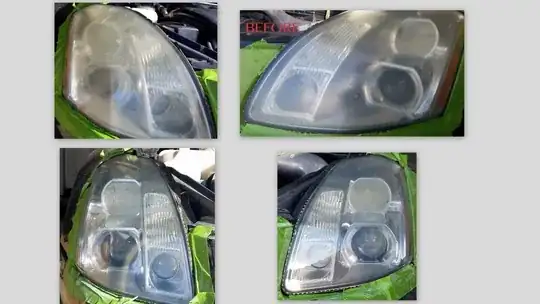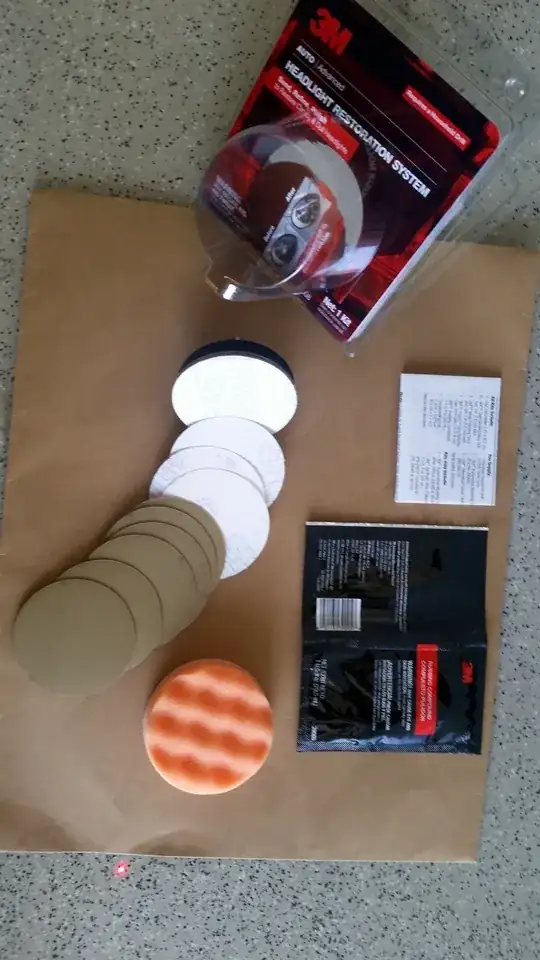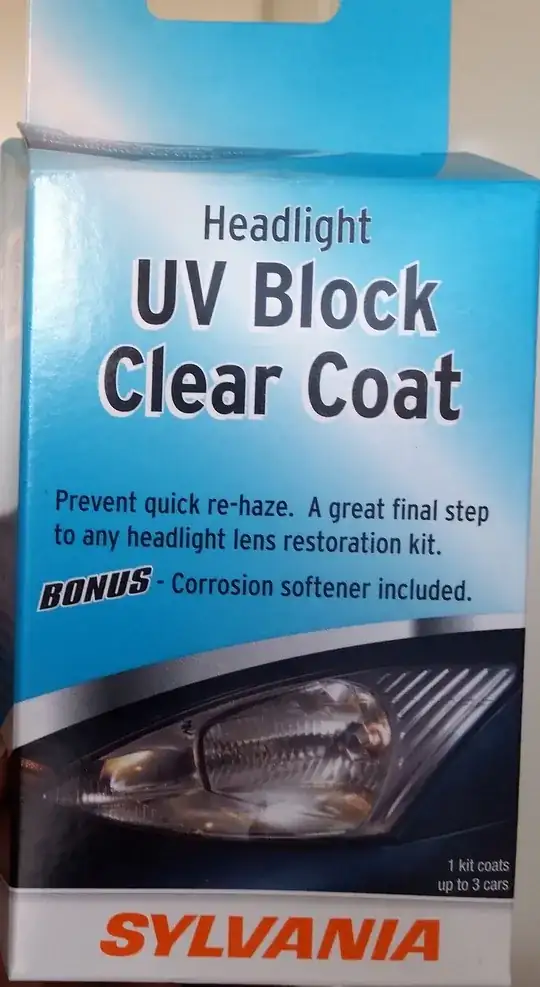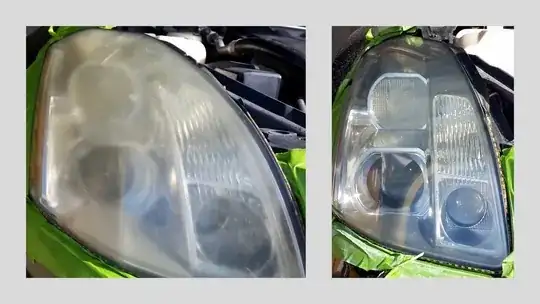I have just spent an inordinate amount of time researching this, and as best I can tell there are numerous methods for headlight lens restoration. Most of them include common first steps:
- Remove the UV damaged layer of plastic. Usually this is done using several different grades of sandpaper, starting withe a coarse grade and finishing with a fine grade. Note this step may vary based on severity of lens damage.
- Restore the lens clarity using some additional product or products.
After these steps have been completed, one of several UV protectant options may be used:
Consumer UV protectant. Most common is to apply a UV protectant that may be in the form a spray or compound applied via a cloth. These protectants offer light protection and it is generally recommended to reapply the protectant every 12 months. Failure to reapply the protectant may result in damage that requires the prior to steps to be performed again.
Polish. A similar option is to use a polish or wax. Usually these options require even more frequent reapplication than the previous option, as these products are generally not intended to protect for the same period as the UV protectants.
OEM UV Protectant. Another option is to go to a professional painter and apply the professional grade UV protectant that is more similar to the protectant from the vehicle manufacturer. This is an expensive process for small batches due the equipment and skilled technician requirements.
Clear coat. A clear coat is intended to provide very long lasting protection against UV damage and is commonly used on top of car paint. However, the reason the auto manufacturer does not use clear coat on the headlight lens is it will cause refraction of the headlight beam.
Plastic outer cover. This option is a manufactured plastic cover that sits just above the headlight lens. This is among the fastest and easiest methods to use, but changes a vehicle's appearance and on some vehicles customers report that the headlight lens will still end up yellowing.
Vinyl film. The vinyl film option uses a film that is most likely originally engineered to protect a vehicle's paint or for applying graphics to a vehicle. Popular brands advertising their films to be safe for use on headlight lenses do not publish data regarding optical clarity, refraction, or attenuation that may be caused by their products when applied to a headlight lens. Manufacturers of films, such as 3M, explicitly do not recommend applying any of their films to a headlight lens. Similar to clear coat, the vinyl film may be very effective at protecting the headlight lens, it may also not be a good idea based on maintaining the engineered functionality of the headlight.
All plastics exposed to the sun will break down over time. Even for a new vehicle or replacement assembly, using a UV protectant will greatly extend the useful life of the lens. It is probably safest to use either a UV protectant spray or application intended for headlights or wax/polish, though the latter will not be a good option for people who are less likely to regularly reapply.
